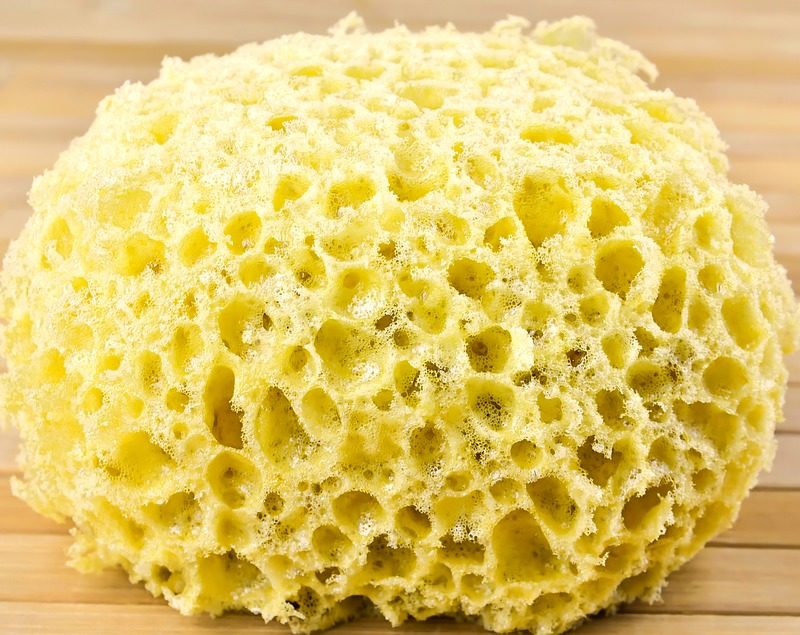Did you know that humans and sponges share a similar range of genes (Srivastava et al., 2010)? There is also a remarkable similarity in the sequences of the genes. How is it that there is such a big difference between humans and sponges when humans are so much more complex? Recent research shows that genes themselves are not the source of our complexity; rather it is in the regulation of gene expression that the difference lies.
A genome consists of a coding (2%) and an noncoding (98%) region (Stein, 2016). For many years, scientists believed that the noncoding region had no function at all and that’s why this region was declared to be “Junk-DNA,” (which is funny if you ask me because nature is never that inefficient).
We now understand that the source of our complexity is in the process of controlling gene expression and modulating their products, rather than in the genes themselves. Much of the molecular machinery for conducting this epigenetic regulation is contained in the noncoding regions of the DNA (Taft, Pheasant, & Mattick, 2007). Important components of this gene-regulating machinery are the ribonucleic acid (RNA) molecules transcribed from noncoding DNA. Many of these so-called noncoding RNAs act to regulate the expression of coding genes in a highly dynamic process that is constantly occurring in virtually every cell of the body and is responsive to information in the cellular environment.
Some of the most well studied noncoding elements are microRNAs. MicroRNAs are short noncoding RNA molecules of 20–25 nucleotides in length that regulate gene expression in animals and plants. More than 3,000 human microRNAs have been identified, and many of these have been shown to regulate the expression of target genes (Bentwich et al., 2005).
***
I was enjoying a latte macchiato in the last sunbeams of the late summer sun outside of a small cafe in downtown Cologne, Germany, reading Energy Healing at the Frontier of Genomics when an article by Garret Yount PhD (Yount, 2013) blew my mind. A scientist at IONS, Yount’s article basically connected gene expression with an energy healing technique called Emotional Freedom Techniques (EFT). Dr. Yount wrote:
“Since there are more than a thousand human microRNAs and each of them is believed to be able to regulate the expression of hundreds of target genes, these molecules have wide-ranging influence in biological processes. As an example, molecular routes are described that start with EFT-induced changes in cortisol levels and follow various established signaling pathways leading to the modulation of gene expression that contributes to cancer biology.”
I was so moved by these speculations that I decided that I wanted to be right there where the magic happens, and that is where I am now, as a volunteer with the Institute of Noetic Sciences and with the National Institute for Integrative Healthcare (NIIH).
Just recently, Dr. Yount and his collaborator, Dawson Church PhD, completed the first randomized controlled pilot study of EFT, evaluating a physiological biomarker and cortisol levels, and published robust positive effects on veterans with PTSD (Church et al., 2012). This paper has been accepted by the American Journal of Health Promotion and will be published soon. At the moment, I have the honour of supporting both scientists with their next study which will be the first in the world: exploring the aforementioned noncoding territory in the context of biofield energy healing modalities by conducting a comprehensive microRNA profiling of the remainder of the frozen blood samples collected for the Pilot Study with sixteen veterans experiencing clinical levels of PTSD.
It is thrilling to be a pioneer on the frontier of genomics at IONS!
REFERENCES:
Bentwich, I., Avniel, A., Karov, Y., Aharonov, R., Gilad, S., Barad, O., . . . Bentwich, Z. (2005). Identification of hundreds of conserved and nonconserved human microRNAs. Nature Genetics, 37(7), 766–770.
Church, D., Brooks, A.J., & Yount, G. (2012). The effect of emotional freedom techniques on stress biochemistry: a randomized controlled trial. J Nerv Ment Dis., 200(10):891-6.
Orom, U. A., Nielsen, F. C., & Lund, A. H. (2008). MicroRNA-10a binds the 5’UTR of ribosomal protein mRNAs and enhances their translation. Molecular Cell, 30(4), 460–471.
Rossbach, M. (2010). Small non-coding RNAs as novel therapeutics. Current Molecular Medicine, 10(4), 361–368.
Srivastava, M., Simakov, O., Chapman, J., Fahey, B., Gauthier, M. E., Mitros, T., . . . Rokhsar, D. S. (2010). The Amphimedon queenslandica genome and the evolution of animal complexity. Nature, 466(7307), 720–726.
Stein, Richard A. (2016). MicroRNAs – Rise from Trash to Treasure. GEN – Genetic Engineering & Biotechnology News, 35th Anniversary!, 36(4) 14 – 15.
Taft, R. J., Pheasant, M., & Mattick, J. S. (2007). The relationship between non-protein-coding DNA and eukaryotic complexity. Bioessays, 29(3), 288–299.
Yount, Garret (2013). Energy Healing at the Frontier of Genomics. In: Church, D., Marohn, S. (2013). The Clinical EFT Handook: A Definitive Resource for Practitioners, Scholars, Clinicans, and Researchers, 1, 87-92.
